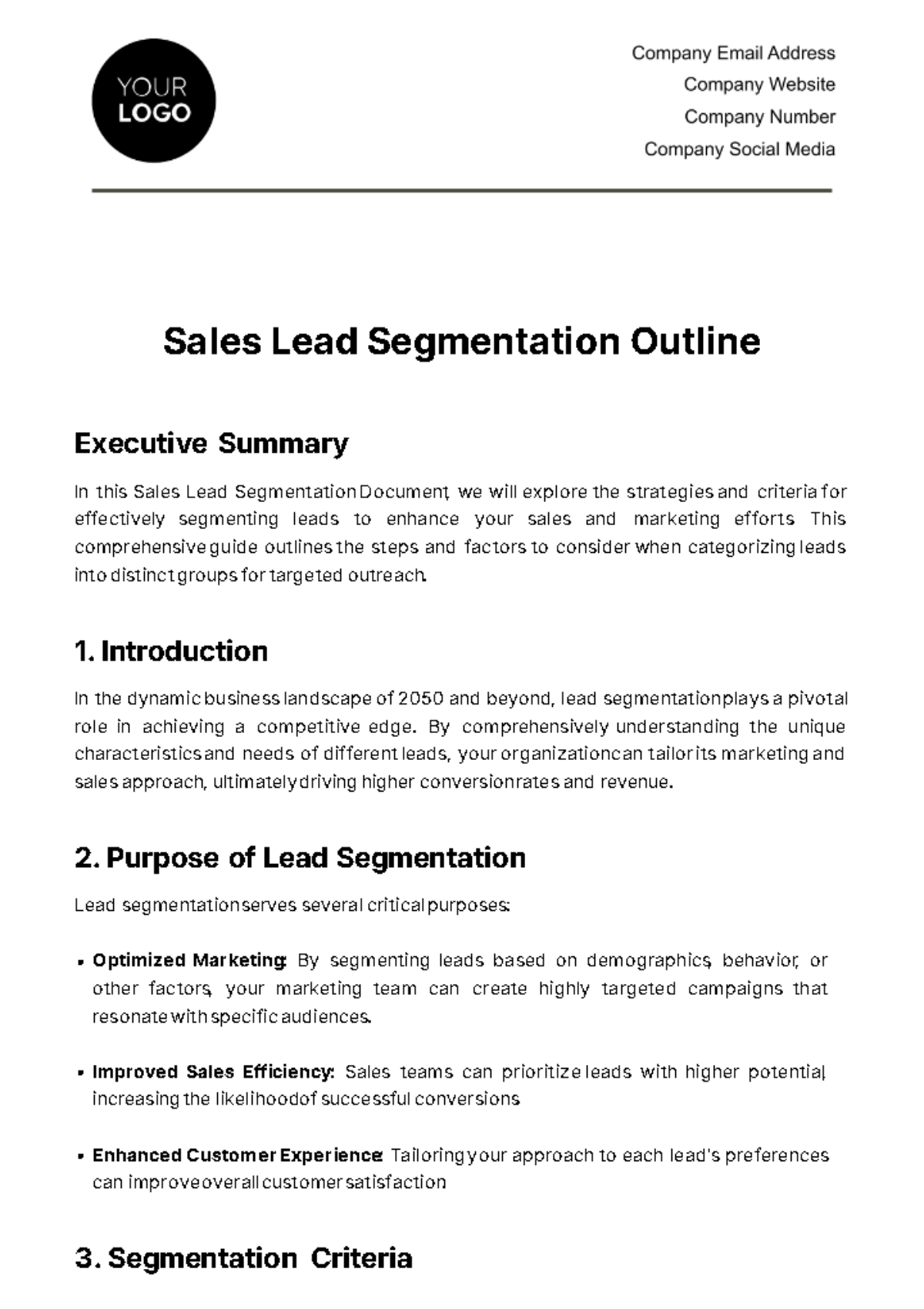Sales Lead Segmentation Outline
Executive Summary
In this Sales Lead Segmentation Document, we will explore the strategies and criteria for effectively segmenting leads to enhance your sales and marketing efforts. This comprehensive guide outlines the steps and factors to consider when categorizing leads into distinct groups for targeted outreach.
1. Introduction
In the dynamic business landscape of 2050 and beyond, lead segmentation plays a pivotal role in achieving a competitive edge. By comprehensively understanding the unique characteristics and needs of different leads, your organization can tailor its marketing and sales approach, ultimately driving higher conversion rates and revenue.
2. Purpose of Lead Segmentation
Lead segmentation serves several critical purposes:
Optimized Marketing: By segmenting leads based on demographics, behavior, or other factors, your marketing team can create highly targeted campaigns that resonate with specific audiences.
3. Segmentation Criteria
3.1 Demographic Segmentation
Sample Answers |
Age: | Age groups can be categorized as Young Adults (18-35), Middle-aged (36-55), and Seniors (56+). |
Gender: | Segments can include Male, Female, and Non-binary. |
Location: | Geographic segments may include Regions (e.g., North, South, East, West) or specific cities. |
3.2 Behavioral Segmentation
Sample Answers |
Online Behavior: | Behavioral segments can include High-Engagement (frequent website visitors) and Low-Engagement (occasional visitors). |
Purchase History: | Segments may include Repeat Buyers, One-time Buyers, and Prospects (no previous purchases). |
Engagement with Content: | Content segments can be Webinar Attendees, eBook Downloaders, and Blog Readers. |
3.3 Firmographic Segmentation
Sample Answers |
Company Size: | Company size segments can include Small Business, Mid-sized Company, and Large Enterprise. |
Industry: | Industry segments can be Technology, Healthcare, and Finance. |
Revenue: | Revenue segments can include Low Revenue (<$1M), Medium Revenue ($1M - $10M), and High Revenue (> $10M). |
4. Data Sources
To effectively segment leads, it's crucial to gather data from various sources:
5. Implementation
Implementing lead segmentation requires collaboration between marketing and sales teams. Here's how it can be done:
Collect Data: Gather relevant data from CRM systems, website analytics, and other sources. Collect data on age, online behavior, company size, and more.
6. Conclusion
Effective lead segmentation is a powerful tool to boost your company's sales and marketing efforts. By understanding your leads' unique characteristics, behaviors, and needs, you can create personalized experiences that lead to higher conversions and increased revenue.
7. Contact Information
For further information or inquiries, please contact:
Sales Templates @ Template.net






























